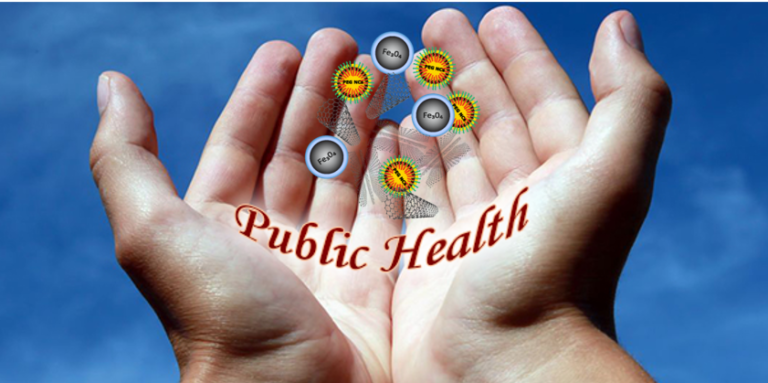HUMAN HEALTH
MICROPLASTICS AND NANOPLASTICS
Worldwide production of plastic has increased exponentially since the end of World War II, as has the volume of related waste, resulting in a ubiquitous global dispersal of plastic debris in the environment. Plastics are progressively fragmented by various weathering and biological processes, leading to the formation of microplastics (MPLs) and ultimately nanoplastics (NPLs). MPLs and NPLs are typically defined as polymer particles smaller than 5 mm and 1000 nm, respectively, although cut-off definitions in the literature differ. In addition, plastics in the MPL size range are intentionally manufactured as ingredients of consumer products like industrial abrasives, or microbeads in cosmetics, and can become fragmented into nanoplastics. Since plastic has low degradability and long-life in the environment, the continued accumulation of MPLs and NPLs in environmental compartments and their potential impacts on biota and human health has emerged as an urgent planetary problem. The European Commission’s SCHEER committee (SCHEER – Scientific Committee on Health, Environmental, and Emerging Risks, 2018) recently issued a statement listing MPLs and NPLs in the environment as one of 14 priority issues.
Our research is aimed to support hazard identification and human health risk assessment of MPLs and NPLs by generating data on exposure to these plastic particles, their biological and immune effects, and the underlying toxicological pathways.
NANOPARTICLES AND FOOD
Nanoscience is one of the most innovative disciplines with strong potentialities in many areas, including food science. The presence of nanomaterials (NMs) in everyday products is on an ever-growing trend. While nanoscale ingredients may offer potential benefits, their safety remains poorly understood, and a growing body of research is raising concerns about their use in the food industry. Many NMs are commonly available on the market (sunscreens, cosmetics, moisturizers, stain, moisture and odor repellent fabrics and clothing, etc). In particular, nano-hydroxyapatite (nano-HA), nano silicon dioxide (SiO²) and titanium dioxide (TiO²), are being used in several products ranging from food and beverage ingredients to packaging. Taking into consideration that babies’ bodies and immune system are developing and can be especially susceptible to exposures from hazardous NMs, there is a lack of specific toxicology studies for these vulnerable population sample. Our research group aims at providing new insights on the potential toxicity of NPs contained in baby formula by in vivo mice and ex vivo newborn studies, from the gene to the protein level.

AIR POLLUTION: AIRBORNE PARICULATE MATTER
Particulate matter (PM) air pollution, a heterogeneous mixture of chemical classes including transition metals, polycyclic aromatic hydrocarbons and their derivatives, is a noteworthy cause of death and infection. Exposure to PM is estimated to be responsible for 4.2 million premature deaths every year (www.who.int). Some of the main health adverse effects of air pollution, which have been intensively studied worldwide over the past 40 years, include: coronary illness, stroke, allergies, asthma, lung cancer or other types of malignant tumors, as well as detrimental effects on the behavioral development in kids. In this contest, the crucial role of the immune system is demonstrated by strong evidence. Indeed, immune system dysfunctions can facilitate the occurrence of PM exposure-related diseases, such as cancer and cardiovascular problems. On the other hand, it is well known the effect of PM on blood cell count and immune activation, leading to the overexpression of specific biomarkers and the increase of cytokines production. Moreover, in the last years, it is becoming clear how the prognosis of PM exposure-linked diseases can be significantly affected by the immune phenotype, the immune-modulation, white blood cell counts and immune activation markers of the patient, e.g. in lung cancer and stroke. Therefore, our research group aim at evaluating the impact of foreign molecules, including PM, on the immune system, as well as the underlying mechanisms, a key aspect to reveal their effects on human health.

